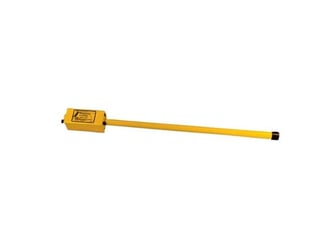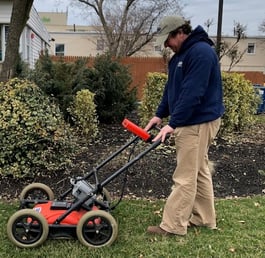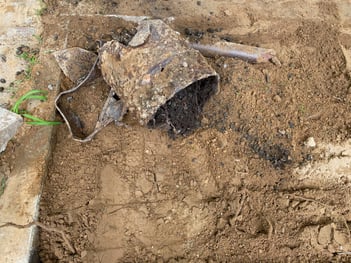Tank sweeps, or tank scans are an evaluation of a property for a buried Underground Storage Tank (UST). Unfortunately, these sweeps/scans have become generic to so many and people are unaware of the limitations, between both the companies providing the scan and the technology used.


Metal Detector Vs. Ground Penetrating Radar
Best price, means least expensive technology (metal detector), for example would purchase a 5SE phone vs. the IPhone 12? Maybe for your young kids, but not for you. The best utilized technology for locating underground oil tanks is Ground Penetrating Radar (GPR).
An example of using a metal detector as opposed to a the Ground Penetrator Radar - Curren was provided a report from a client who asked for an underground oil tank removal. Oil tanks were discussed in the report. The tank locatoror who provided the tank scan with noted the following: “While conducting the oil tank scan it was noticed that there is the possible presence of an oil tank at the front of the home. This was noticed using Schonstedt magnetic locator which detects the magnetic field of ferromagnetic objects. The object that was detected is 3ft x 5ft. After detecting this object a 4 ft probe was inserted into the ground in this area and we detected a object about 3 ft below the surface. A qualified oil tank removal company should further evaluate to determine the size and depth of the possible tank. This company should also conduct proper soil samples to determine if a leak is present at the possible tank.” Several photographs were also included to indicate the meter utilized, and the areas investigated.
Instead of doing another scan with the Ground Penetrating Radar, the client asked Curren to remove the said underground oil tank found with the metal detector. Curren mobilized equipment and labor to remove the #2 fuel oil UST (subject tank). Curren excavated in the area identified in the Tank Inspection report to a depth of 9’.
No tank was located. Curren then excavated toward the residence additionally to 9’. No tank was located. Curren inspected the basement for copper lines and no copper lines were found.
Conclusions & Recommendations
The conclusions are based upon the review of available information, field observations and test results obtained during this project. Curren Environmental, Inc. does not assume any responsibility for using this report for purposes other than those indicated in the specific area investigated.
Based on onsite observations, the areas indicated in the report were investigated, no underground storage tank was located in this area. The client, ended up spending a large sum of money to remove an oil tank that was not there.
What is a metal detector? "Metal detectors use electromagnetic fields to passively or actively detect the presence of metallic objects. Passive detection measures the changes in the Earth's magnetic field caused by an object." The photo below shows some debris, that debris was located by a metal detector. Curren was contracted by client to remove the "underground oil tank". The metal detector tank sweep found debris, not an oil tank.

What is a ground penetrating radar system? Learn more here.

